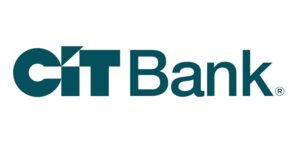 Whenever you write a check, it generally has a name that you’re writing the check to. This is for security reasons to ensure that someone can’t just steal the check and cash it in for themselves.
Whenever you write a check, it generally has a name that you’re writing the check to. This is for security reasons to ensure that someone can’t just steal the check and cash it in for themselves.
However, there is a method where you can write a check that’s really convenient for cashing in.
A check can have “cash” written in place of where the name or organization would be. So in the end it’d look like “Pay to the Order of: Cash.” Even though it’s easy and convenient, its risky.
What Is a Check to Cash
A check to cash is when you have the line where the payee’s name/organization would be has the word “cash” instead. Since the check isn’t made out to a specific person, anyone can walk in with it a cash it making it convenient, but risky. The point of a check is to generally move money safely to one person only, that is what makes it more secure than using cash outright.
Treat the check like cash, anyone can use it, so if you drop/lose it, anyone who finds it can decided to cash it in. Of course if that was the case you should quickly cancel the payment before whoever found it cashes it in. If, for some reason, the person who picks up your check decides to not use it, they can give it someone else. Thus, posing another risk.
If you’re unsure of what the line is where the payee’s name goes, be sure to check out our post on Guides to Checks.
Why Write a Cash Check?
- Unknown Payee: If you were to write a check to someone that you didn’t know, you could simply write cash and they’ll have an easy time cashing in the check. This is great when you know the amount you need to pay but don’t know the payee’s legal name.
- Paying Yourself: Some people write cash checks to themselves just to withdraw cash. Though it’d probably be easier just to use an ATM, it’s still something you can do if you need to. However, if you’re just moving cash from one account to another, it’s probably easier to do so electronically.
Why Not to Write to Cash
- Risk of Loss: Just like cash, if you drop your cash check, anyone can use it, you don’t have control over who uses it. If this is the case, you and your bank have to watch for fraudulent transactions. If you don’t catch it in time, then you’re going to have to take legal actions to get the money back.
- Hesitant Banks: Some banks don’t like checks that are paid to cash and may not honor it at all. They can place a longer hold on the check and may refuse to provide officials checks paid to cash.
- Paper Trail: A check without a name makes it really hard to keep track and documentations of transactions.
- Better Solution: If you’re going to write a cash check, mind as well just leave the payee name’s line blank anyway. A blank line and a line with cash in it are essentially the same. However, if and when you find out who you’re paying to, you can fill it in instead of just having to deal with “cash” taking up the line.
How to Deposit a Check Made to Cash
If you’re going to deposit a cash check, do so like you’d do with any other check. Endorse the back by signing it and give it to your teller at your branch. If you want the money in your account, be sure to write down your account number on the check before you give it to the teller.
However, if you would rather cash the check, you will most likely need to go the the specific bank that the funds are drawn on. To make it easier on you, locate the name on the front of the check and contact your nearest branch to see if they will cash the check.
 |
 |
Bottom Line
Unless you find it more convenient, it’s probably better to just stick with cash rather than writing a check with an amount on it. There are many risks that come with writing a cash check such as losing/someone stealing it or the bank refusing to accept the check or hold it even longer.
There may be no benefits for this check over using an ATM to get cash. If you found this post interesting, be sure to check out our other posts on Bank Guides. Also check out our posts on Best Bank Bonuses, Best Savings Account Rates, and Best Credit Card Bonuses.




Leave a Reply